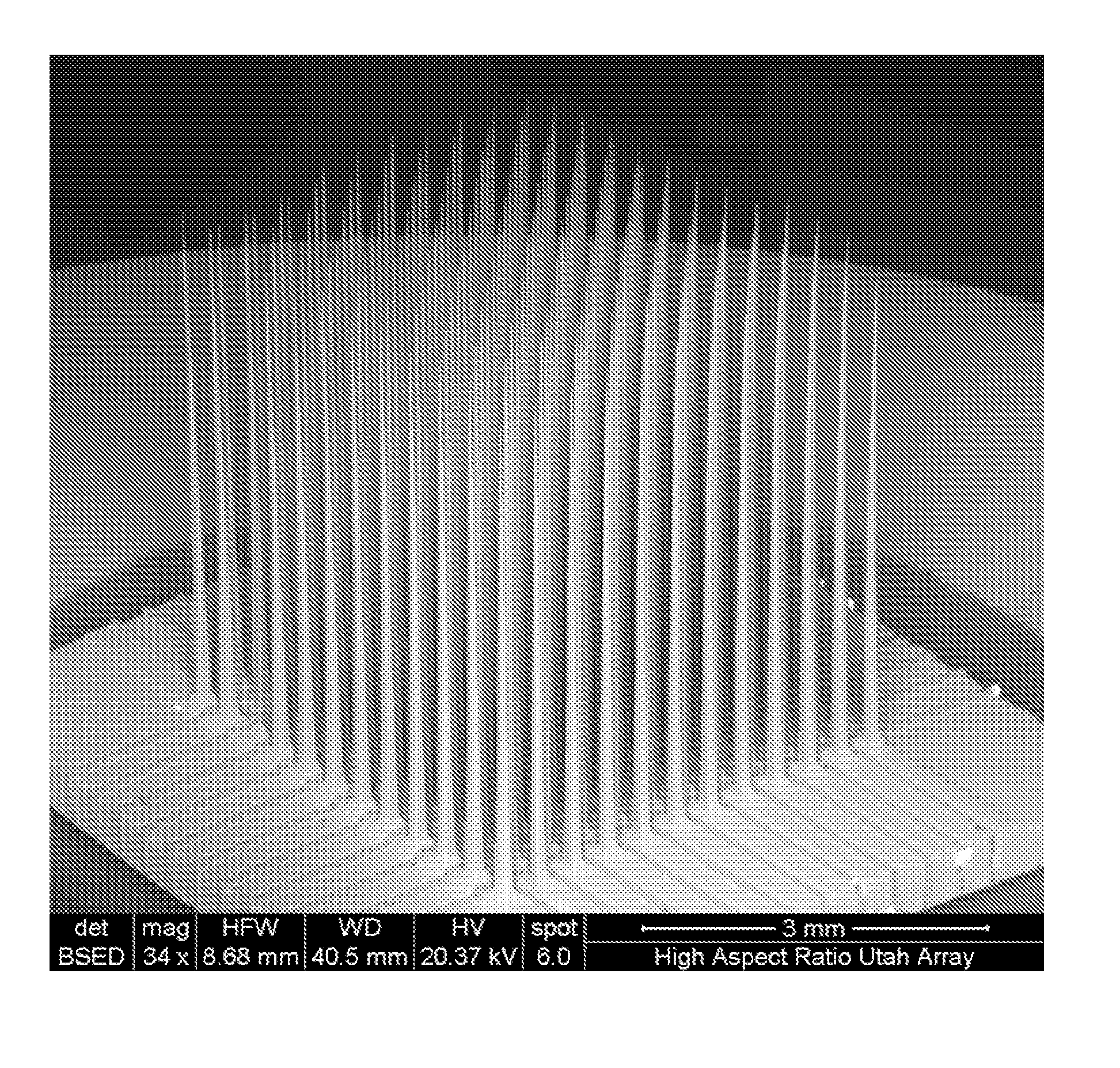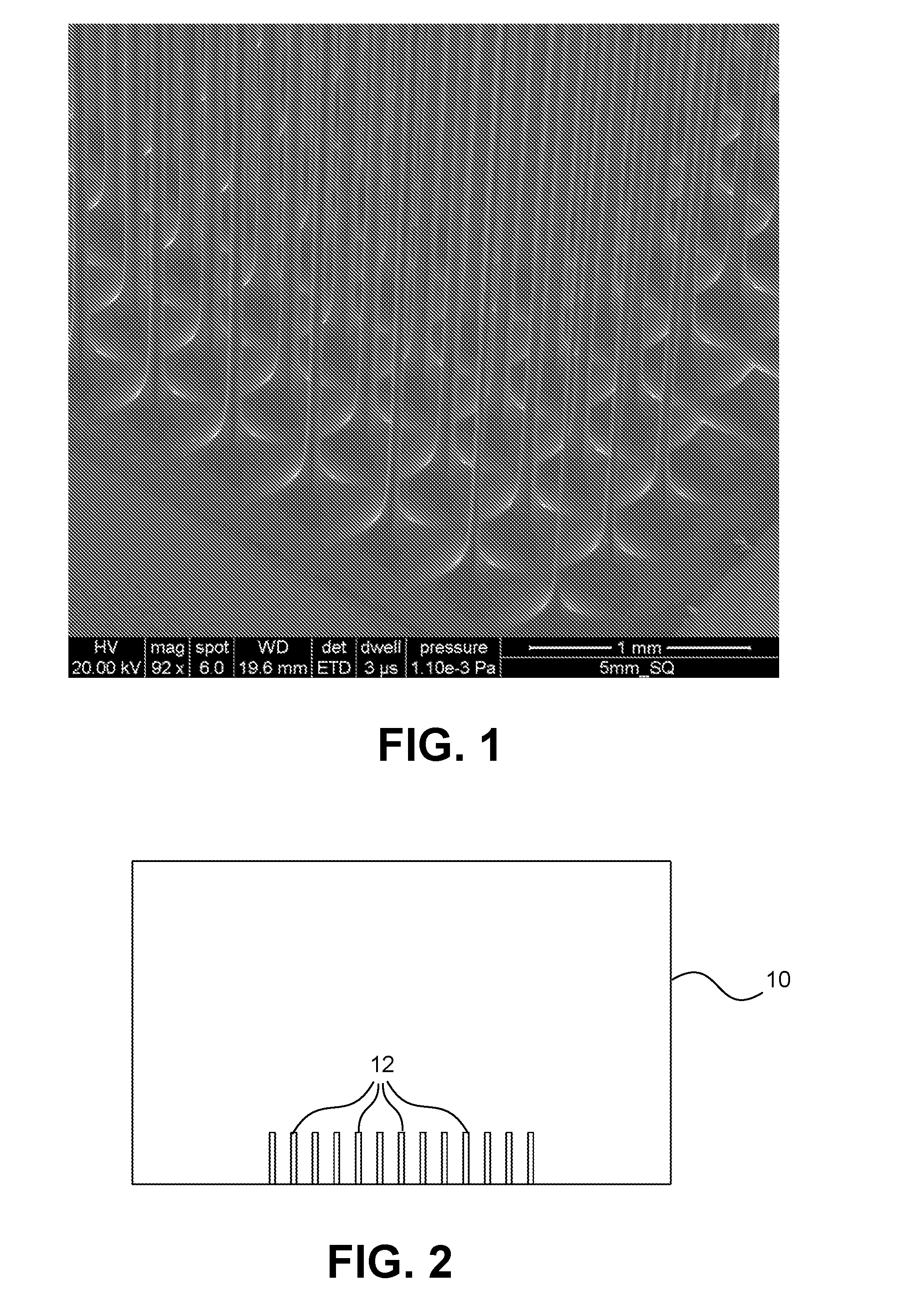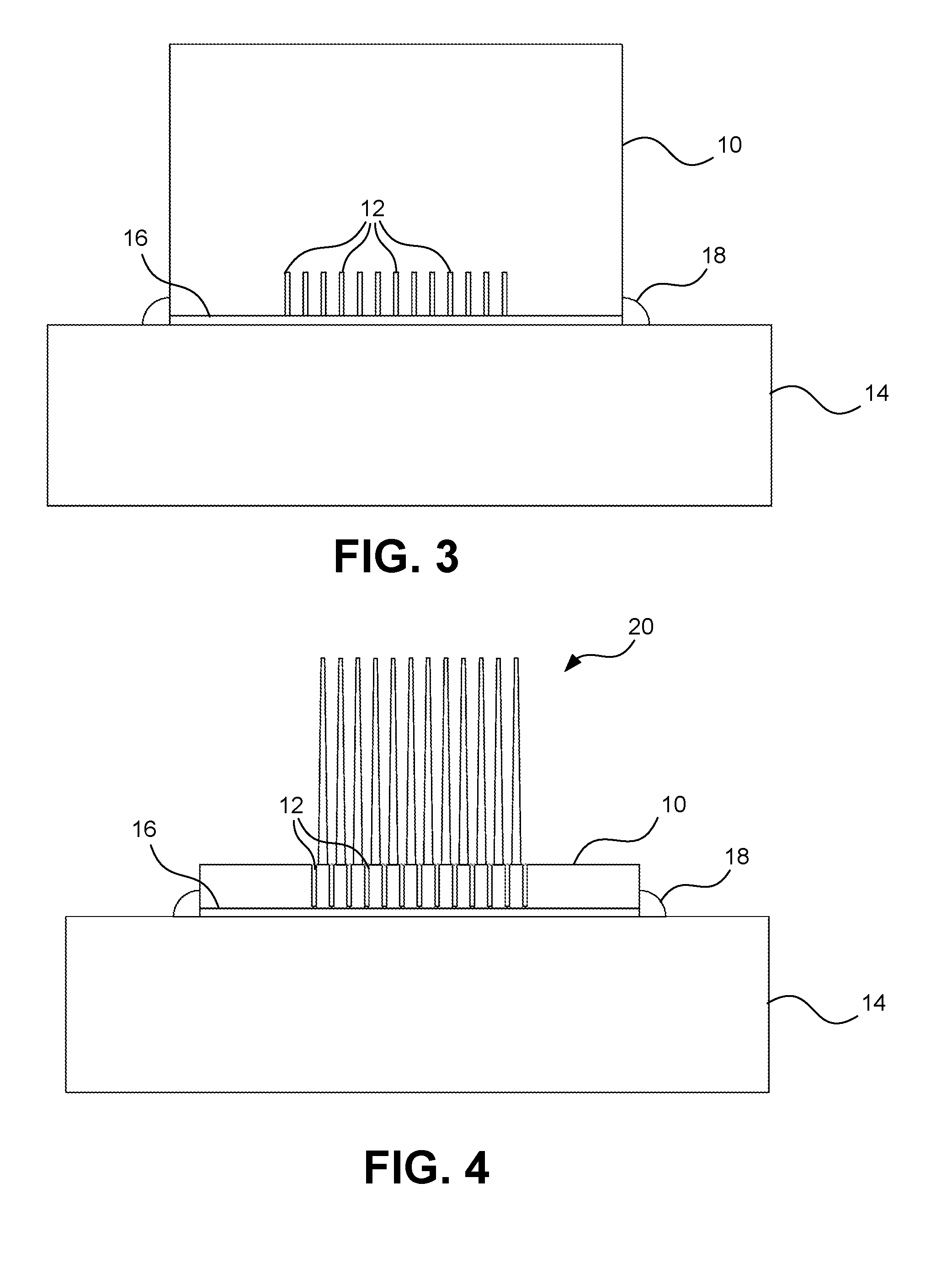High Aspect Ratio Microelectrode Arrays Enabled to Have Customizable Lengths and Methods of Making the Same
a microelectrode array and length technology, applied in the field of microelectrode array devices and fabrication methods, can solve the problems of inability to probe and stimulate neurons in complex three-dimensional environments, limited electrode placement and length, and inability to produce satisfactory needles by simply using conventional electrode formation processes, etc., and achieve ultra-high aspect ratio electrodes.
- Summary
- Abstract
- Description
- Claims
- Application Information
AI Technical Summary
Benefits of technology
Problems solved by technology
Method used
Image
Examples
Embodiment Construction
[0015]Before the present invention is disclosed and described, it is to be understood that this invention is not limited to the particular structures, process steps, or materials disclosed herein, but is extended to equivalents thereof as would be recognized by those ordinarily skilled in the relevant arts. It should also be understood that terminology employed herein is used for the purpose of describing particular embodiments only and is not intended to be limiting.
[0016]It must be noted that, as used in this specification and the appended claims, the singular forms “a,”“an,” and “the” include plural referents unless the context clearly dictates otherwise. Thus, for example, reference to “a needle” includes one or more of such features, reference to “tips” includes reference to one or more of such ends, and reference to “machining” includes one or more of such steps.
DEFINITIONS
[0017]In describing and claiming the present invention, the following terminology will be used in accorda...
PUM
| Property | Measurement | Unit |
|---|---|---|
| height | aaaaa | aaaaa |
| height | aaaaa | aaaaa |
| height | aaaaa | aaaaa |
Abstract
Description
Claims
Application Information
 Login to View More
Login to View More - R&D
- Intellectual Property
- Life Sciences
- Materials
- Tech Scout
- Unparalleled Data Quality
- Higher Quality Content
- 60% Fewer Hallucinations
Browse by: Latest US Patents, China's latest patents, Technical Efficacy Thesaurus, Application Domain, Technology Topic, Popular Technical Reports.
© 2025 PatSnap. All rights reserved.Legal|Privacy policy|Modern Slavery Act Transparency Statement|Sitemap|About US| Contact US: help@patsnap.com



